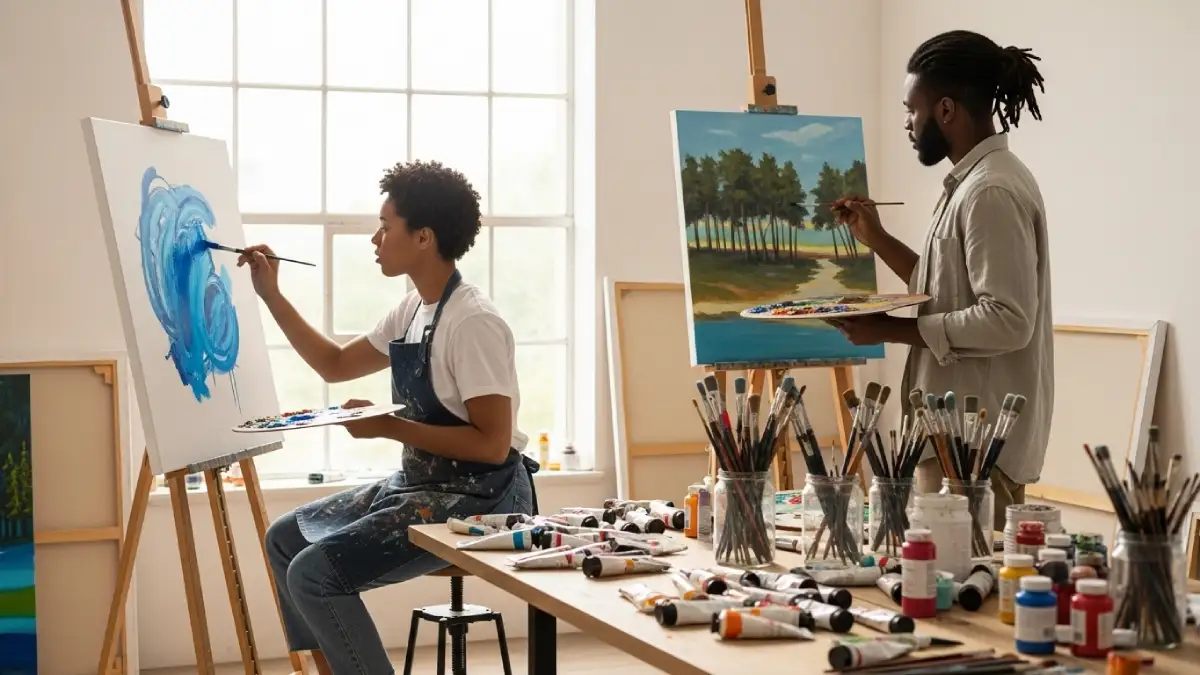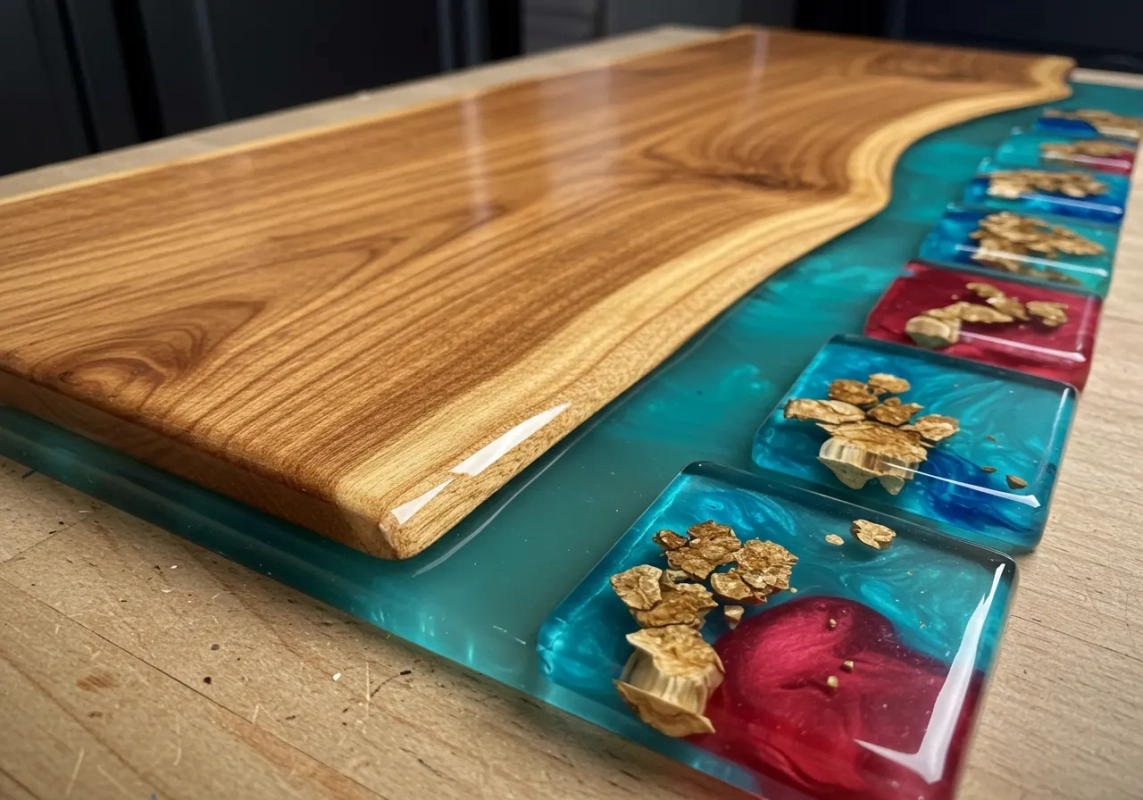Top 7 Acrylic Painting Techniques Every Beginner Should Try

Acrylic painting is one of the most exciting mediums for new artists. Acrylic Paints are bright, fast-drying, and incredibly versatile to use. Whether you’re an art student in Nairobi or simply exploring your creative side, mastering a few core techniques can completely change how your paintings look and feel and your view on creating Unique art Projects.
Here are seven essential methods that every beginner should experiment with that are easy enough for home projects yet powerful enough to form the foundation of your artistic journey.
🖌️1.Dry Brushing Painting
Dry brushing is a fantastic way to create texture and movement in your art. Instead of loading your brush with wet paint, use just a small amount and sweep it lightly across the surface. This allows the bristles to skip over the texture of the canvas.
How to do it:
- Use a dry synthetic brush and pick up a small amount of paint.
- Gently drag it across your surface without pressing too hard.
- The paint will skip over the texture of the canvas, leaving a rough, textured look.
It’s perfect for painting grass, fabric, or weathered wood, and adds a sense of realism without needing fine detail. Try it on a primed canvas or wooden board
💡 Beginner Tip: Practice on scrap paper or canvas boards. This technique is great for landscapes and rustic scenes.
🌊 2.Wash Painting (Thin Layering)
A wash involves diluting your acrylic paint with water or medium to create a transparent, watercolor-like layer. This technique is great for creating soft backgrounds, gentle color fades, and watercolor-like effects. Washes are perfect for painting skies, sunsets, and large color areas.
How to do it:
- Mix a small amount of paint with water (around 50/50).
- Apply with a large, soft brush in even strokes.
- Let it dry before adding more layers for deeper tones.
💧 Pro Tip: Try washes when you want your painting to feel light, airy, or atmospheric.
🌫️ 3. Scumbling
Scumbling means brushing a thin layer of lighter or darker paint over another color so that the bottom layer still shows through.
This technique is great for creating foggy, misty, or smoky effects so it makes it perfect for painting skies, clouds, or soft light transitions.
How to do it:
- Use a dry or slightly damp brush for best results.
- Pick up a small amount of paint and lightly rub it over your dry base color using circular motions.
🌥️ Beginner Tip: Use this when you want to show depth or make your painting feel softer and more natural.
🔪 4.Palette Knife Painting
If you love texture, try putting down the brush and picking up a palette knife. Using a knife allows you to apply thick, expressive strokes of paint, much like spreading icing on a cake.
This technique allows you to create bold textures, sharp edges, and vibrant color blending right on the canvas. Ideal for abstract art, mountains, or floral details.
How to do it:
- Scoop up some thick acrylic paint with your knife.
- Spread or “smear” it across the canvas like butter on toast.
- Clean the knife between colors to avoid muddy results.
💡 Beginner Tip: Try this when you want your art to feel expressive and full of movement. Use thicker paints like Signature Acrylic Paint 75ml for the best texture.

💧 5.The Pouring Technique
Acrylic pouring is one of the most visually captivating techniques — and one of the easiest for beginners to enjoy. By mixing your acrylic paint with a pouring medium, you can create flowing, marbled patterns that form naturally as the colors move.
This method is used for abstract art, colorful swirls, and marbled effects — no brush needed!
How to do it:
- Mix equal parts of acrylic paint and pour the mixture in a cup.
- Pour the mixture onto your canvas.
- Tilt the surface gently to let the colors flow and blend.
🌈 Beginner Tip: Pouring is great for relaxing, intuitive painting. Just protect your workspace — it can get a little messy!
🌿 6. Stippling
Stippling means using small dots or dabs of paint to create texture, shading, or patterns.
It’s perfect for creating leaves, flowers, and textured effects or for Dot-art where images are built from tiny dots.
How to do it:
- Dip your brush tip or sponge in paint.
- Gently tap it on the surface to build up dots.
- Use different colors or densities for shadows and highlights.
🌼 Beginner Tip: Try stippling when you want to control how light and shadow appear — it’s especially fun for nature or still-life art.
✨ 7. Glazing
Glazing involves using your acrylic paint to create transparent layers of color over dried paint to add depth, shine, and richness. It’s great for making your colors glow, adding shadows, or enhancing realism — especially in portraits or still-life paintings.
Exploring these techniques will give you a strong foundation in when using acrylic paint— from mastering light and layering to adding texture and shine. Don’t worry about perfection; art is all about experimenting and finding your rhythm.
How to do it:
- Mix a small amount of paint with glazing medium (not water).
- Apply thin, even layers with a soft brush.
- Let each layer dry before adding another.
🌟 Beginner Tip: Glazing takes patience, but it can turn a flat painting into something that looks illuminated from within.
🌟 Final Thoughts
Start small, practice often, and most importantly, use quality materials that let your creativity flow freely. Whether you’re stocking up for class or painting from home, you can find all your essentials — from brushes and canvas boards to Signature Acrylic Paints and pouring mediums — right here at Sayari Crafters. Let us help you enjoy Art
🔗 Helpful External Resources
Enhance your creative skills and materials knowledge by exploring:
Sayari Crafters – for artist tools and materials.
Kenya National Art Gallery – for exhibitions and inspiration.


